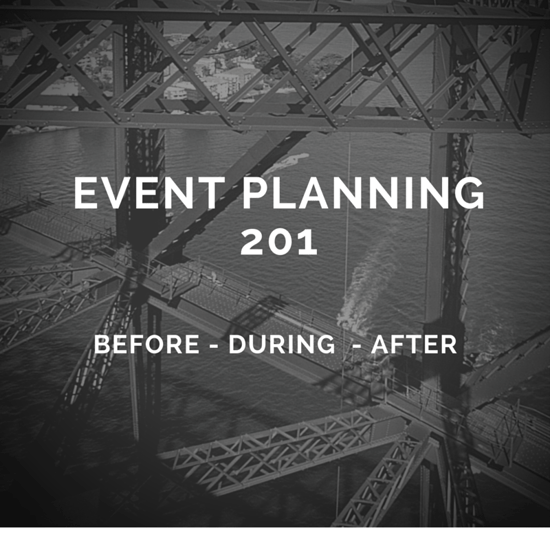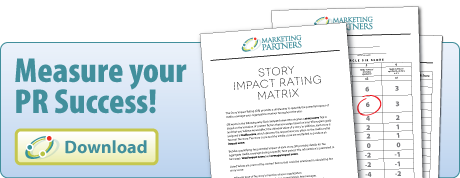
In previous posts, we’ve shared the basics of event planning: how to make your event newsworthy and a top 10 list for every event. In this post, we’ll discuss some of the before, during and after details that can make or break any event.
Creating interest before the event
Often the reason for hosting an event is to earn media attention and interest reporters in doing a story on your organization. Typically, an organization will send out a news advisory before an event that shares the facts about the event (who, what, where, when and why).
But this is step two in our process. We start by identifying those reporters and outlets we think would be most interested in our story. And we craft customized pitches to each one of them in advance of sending out any news advisory—sharing a particular angle or nugget of information that we think would be of interest to their readers or viewers. If we can spark interest from a media outlet before an event, that’s great! We’ll then follow up with the news advisory a few days later.
Expect the unexpected
Despite the best planning, things will go wrong at events. Clients will forget their talking points. The Governor or guest of honor will run late. The media will get distracted by breaking news and not show up. Technology will fail. The point here: It’s important to expect these types of things for your events—and plan accordingly.
Doing a site visit and having an event rehearsal ahead of time will address many of these issues. Here are a few other tips as well:
- Bring copies of everyone’s talking points.
- Have copies of the news release and other important background information (and business cards) with you ready to share with media folks.
- Keep your audience and media updated if the VIP for your event is late. (Build in some flexibility and have a Plan B for the event’s flow so you can juggle things around if needed.)
- If the media doesn’t show up, be ready to follow up with them afterward.
- If technology fails or the laptop for your presentation doesn’t make it to the event, have handouts ready. Or better yet, bring your own technology.
If you expect and plan for these hiccups ahead of time, you’ll be an event superhero!
Events aren’t over—even when they’re over
Once the event is over, we can all breathe a sigh of relief. It’s done, right? Not really. After the event, your PR team moves into “event follow-up” mode.
Here there’s an internal post mortem among your PR team to discuss what went well and what didn’t, to identify next steps and make any notes for future events. It’s also helpful to debrief with the client team as well.
There is most certainly follow up with the media. Those who didn’t attend need to get a media kit showing them what they missed (but could still do a story on). The media kit should include photos and video from the event as well as the news release—everything they need to write a story. Those reporters who did attend should get a little “thank you for coming” and an inquiry to find out if they need anything else for the story they’re working on.
If you use a distribution service for sending your event news releases, follow up on any bounce backs and resend your news materials as needed. If you don’t get the media pick-up you hoped for, think about how your news might be repackaged and resent at a later date.
Don’t forget about social media. Leverage your photos, quotes and other key messages from the event through your social media channels. (And, don’t forget to write a blog post about it.)
For any event, planning the work and working the plan takes a lot of time and effort, but tending to the details before, during and after can make your event stand out from the rest.





